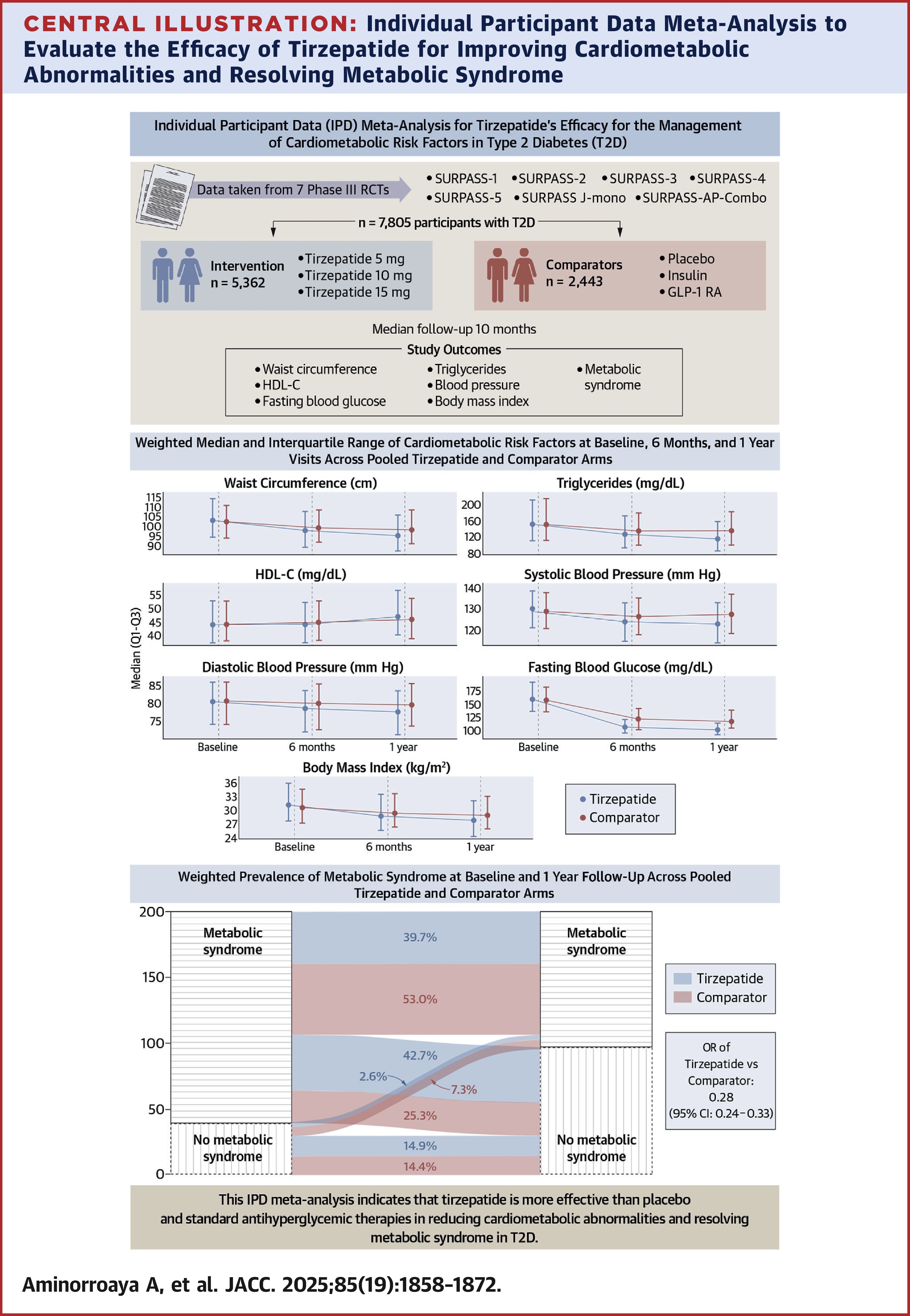Tirzepatide Effective on Cardiometabolic Abnormalities, Metabolic Syndrome in T2D
The dual GIP/GLP-1 receptor agonist tirzepatide is effective in improving cardiometabolic abnormalities and resolving metabolic syndrome (MetS) in patients with type 2 diabetes (T2D) compared to placebo or standard antihyperglycemic therapies according to a new pooled analysis published in JACC.
In the meta-analysis, Arya Aminorroaya, MD, MPH, et al., synthesized individual participant data from 7,805 participants with T2D from seven phase 3 randomized clinical trials across the Asia-Pacific, South America, Europe and North America: SURPASS 1-5, SURPASS-AP-Combo and SURPASS J-mono. Each trial observed the effect of once-weekly doses of tirzepatide at 5, 10 or 15 mg vs. placebo or standard antihyperglycemic agents (GLP-1 RAs or insulin) for 40-52+ weeks.
In the combined pool of participants, 5,362 were in intervention arms and 2,443 in comparator arms. The weighted median age was 59 years, 43% were women and about a third each were Hispanic, White and Asian. At baseline, the average BMI was 31 kg/m2 and 81% had MetS.
Key outcomes included cardiometabolic abnormalities associated with adverse cardiovascular outcomes, components of MetS and the composite MetS – characterized as the presence of at least three of the following: elevated waist circumference (WC), elevated triglycerides, decreased HDL-C, elevated blood pressure and/or elevated fasting blood glucose based on guidelines. BMI was included as an additional outcome.
Results at a weighted median treatment duration of 41 weeks showed that tirzepatide reduced the odds for all observed cardiometabolic abnormalities, including a 34% reduction in odds for decreased HDL-C, 72% reduction for MetS and 96% reduction for elevated BMI.
Tirzepatide was found to be superior to both placebo and standard agents at resolving MetS across all demographic and clinical subpopulations and was more effective in participants <65 years of age and in those without baseline use of SGLT2 inhibitors.
"The greater cardiometabolic benefits in younger vs. older adults support the potential role of treatment initiation early in life," write the authors, noting that, "the consistent benefit of tirzepatide across key demographic and clinical subpopulations supports its efficacy in broad patient subgroups, regardless of the baseline use of other antihyperglycemic and cardioprotective agents."
In an accompanying editorial comment, Safi U. Khan, MD; Ambarish Pandey, MD; and Khurram Nasir, MD, FACC, note that the heterogeneity across the seven trials is both a feature and limitation of the analysis. "This study underscores [tirzepatide's] ability to target a broad range of disease components and highlights the often-overlooked reality of heterogeneous individual responses – a challenge well known to health care providers but rarely reflected in clinical trials," they write. "Identifying which patients are most likely to benefit becomes a critical next step as we advance toward more precise prevention strategies."

Clinical Topics: Diabetes and Cardiometabolic Disease
Keywords: Body Mass Index, Glucagon-Like Peptide-1 Receptor, Diabetes Mellitus, Type 2, Metabolic Syndrome
< Back to Listings
